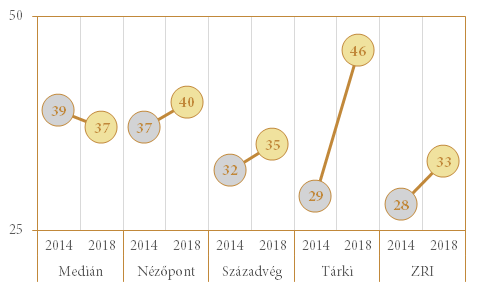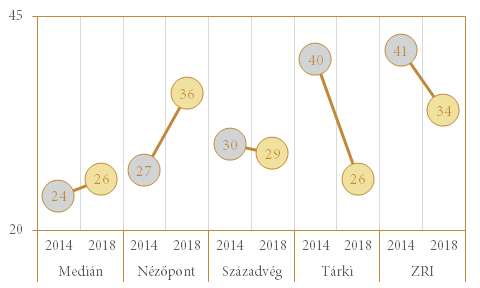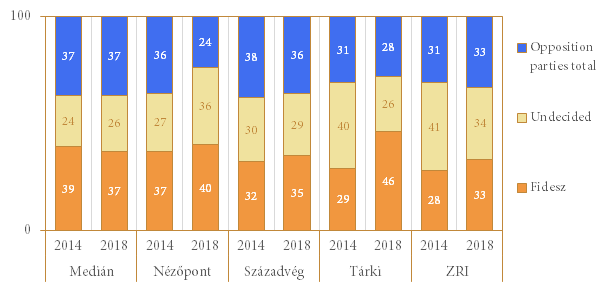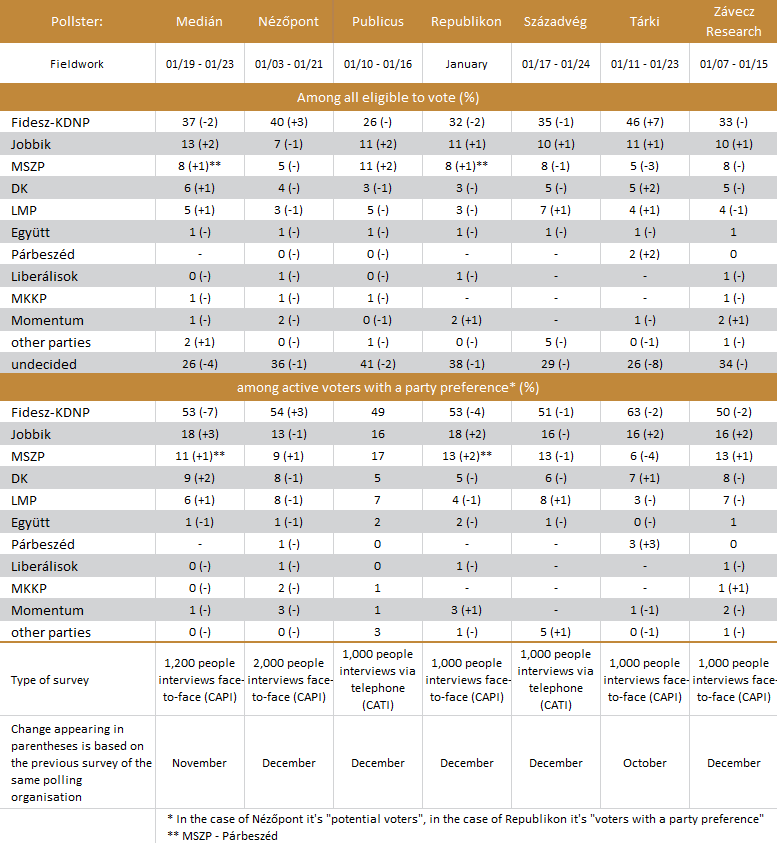Undecided voters are about to make their choice
2018-02-09
- Public opinion polls conducted in January suggest that Fidesz’s lead remains convincing. In general, support for the governing party matches data from December. On average 36.2% of eligible voters would have voted for the governing party in January – this is a two percentage point increase over the fourth quarter of 2017. Differences between the polls of different institutes remain significant: 46% of Tárki’s respondents said they would vote for Fidesz, while in the case of Publicus only 26% supported the governing party.
- Jobbik’s popularity increased by 1-2 percentage points. In January, 10.3% of eligible voters would have voted for the party on average. This suggests that the slow decline of the past two years has stopped. Public opinion polls conducted in February will show whether we can talk about a trend in terms of Jobbik’s rising support.
- MSZP is characterised by stagnation. In January, 7.5% of the electorate would have voted for the party on average, which almost matches their result in the fourth quarter of 2017. Only Publicus measured a two percentage point increase in the party’s popularity. In their poll, MSZP’s support matches that of Jobbik (11%).
- The average popularity of both DK and LMP is 4.7% according to data from January. Both parties became stronger in the past half a year, albeit only slightly. The institutes continue to measure the other parties close to the one percent measurement limit.
- The share of the so-called uncertain voters – those who cannot choose a party or keep their preferences to themselves – is 32% on average. Their number decreased slightly, thus citizens who remained passive so far have started to select their preferred parties as the general election on April 8 inches closer. This process is expected to continue in the following months, which could redraw the power balance.

Figure 1: Support for political parties among eligible voters (quarterly average based on the polls of Medián, Nézőpont Institute, Publicus, Republikon, Századvég, Tárki and Závecz Research)
The popularity of parties now and four years ago
- There are five institutes who conducted a party preference poll both this year and in January 2017. The popularity of the governing party only lags slightly behind (by two percentage points) its result from four years ago in the case of Medián. In the polls of the other four institutes Fidesz is currently stronger than in the first month of 2014. The largest difference is present in Tárki’s polls, where the government was measured at 46% in January 2018 among eligible voters, which is 17 percentage points higher than the 29% result from four years ago.

Figure 2: Fidesz’s popularity among eligible voters in January 2014/2018
- In the case of Jobbik, the picture is unclear. In Nézőpont’s poll the party is three percentage points weaker than in January 2014. Századvég’s polls show no difference over four years. At the same time, the results of Medián, Tárki and Závecz Research indicate that Jobbik is more popular than it was in 2014.

Figure 3: Jobbik’s popularity among eligible voters in January 2014/2018
- The comparison of the share of undecided voters does not show a unified picture across the polls of different institutes. According to the research of Medián and Nézőpont, today there are more undecided voters than four years ago. In the case of the other institutes the share of undecided voters is smaller this January. The larges discrepancy shows in Tárki’s polls similarly to the case of Fidesz’s popularity. In their poll from 2018 26% had no party preference, while at the same time in 2014 this value was 40%.

Figure 4: Share of undecided voters among eligible voters in January 2014/2018
- Four years ago, the total popularity of opposition parties largely matched that of Fidesz in almost all polls, the difference was not above three percentage points. The exception was Századvég, where the opposition led by six percentage points. This January, the polls of Nézőpont and Tárki show a massive Fidesz advantage. In the case of the former, Fidesz’s advantage over the opposition as a whole is 16 percentage points, while in the latter case it leads by 18. At the same time, the polls of Századvég, Medián and ZRI suggest that the popularity of Fidesz and the opposition basically match each other.

Figure 5: The popularity of Fidesz and opposition parties, and the share of undecided voters among eligible voters in January 2014/2018
- Just for the record: in 2014 Fidesz gained 43.5% of votes (within Hungary), while the three oppositional party lists that made it to the Parliament received an aggregated 52.4%.

Figure 6: Support for political parties according to the most recent polls
Copyright 2025. Political Capital Policy Research and Consulting Institute, all rights reserved.

